The US and the UK Master’s Part / Chapter-wise Dissertation Writing Service

Then You’ve Certainly Reached the Right place
Strategic People Management
Theories of Strategies HRM
In terms of both academics and practical, the strategic human resources management (SHRM) has a greater dominance for two decades. Persons such as Schuler (1997), Niniger (1980), Galbraith and Mathanson (1978), sweet (1982), Davis (1981), Lindtroh (1982) have done extensive research in developing models for the strategic human resources management. As the theory had a lot of improper issues, it had so many criticisms. But after the revisions made by Kamoche (1996), Wright and McMahan (1992) and Jackson and Schuler (1995) many articles that are proposing the models can into practices thus explaining the strategic human resources management.
The various theories of strategic human resources management are reviewed in this article. These include similarities, dissimilarities, and themes in theory. The latest theories of strategic human resources management are emphasized not only in terms of operational and functional approach, also the horizontal, vertical and external link towards strategic management process, and the human resource functional practices, organizational practices and environment are emphasized (Wright and Snell, 1991; Schuler and Jackson, 1987a; Wright and McMahan, 1992) .
The strategic human resources management has four main theories. They are:
- The universalistic perspective
- Contingent perspective
- Configurational Perspective
- Contextual perspective
The Universalistic Perspective
This perspective mainly involves the analysis that is involving the study of isolated human resource policy that is involved in organizational performance (Terpstra and Rozell, 1993). The empirical testing is mainly emphasized in terms of the performance relationship of HRM that leads to the greater statistical significance level. On the contrary, crucial variables, relationships and constructs are not considered. In order to overcome the problems of costs reduction of internal management and opportunism problems, the universalistic writers demonstrate the influence of policies like an appraisal on the performance (Delery and Doty, 1996).
Also, presentations made by Duncan and Hoffman (1981) and others fostered the conclusions from the human capital theory, like organizations having skills, abilities, and knowledge will have a better performance level than the other organizations which don’t have these skills.
The Contingency Perspective
The need for a link between the performance and human resource management is emphasized by this model (Delery et al, 1996; Galbarith and Nathanson, 1978). The analysis level of the contingency research is in accordance with the universalistic work. The analysis of single functional area and groups are carried out. On the contrary, internal synergic mechanism and the integration of practice are not considered when the system is proposed (Delery and Doty, 1996). The three general categories of the contingency relationships are
i. Strategic (e.g., Cappelli Singh, 1992), Organizational (e.g., Jackson and Schuler, 1995) and Environmental factors (e.g., Walker, 1990).
Thus the contingency approach, when compared to other universalistic foundations, has built a strong theoretical body even though it the strength of statistics is not that of the previous one.
In spite of the social capital theory (Uhl-Bien et al. 2000) and the transaction cost theory (e.g., Jones, 1984), the theoretical frameworks such as capabilities & resources view of the firm and the behavioral theory have increased the contingency model development. The quantitative focus lies apart from the deductive logic as the previous theory.

Researchers to mentor-We write your Assignments & Dissertation
With our team of researchers & Statisticians - Tutors India guarantees your grade & acceptance!
About serviceThe Configurational Perspective
In this, the human resource management is defined by a possible configuration are obtained by combining the element sets in various ways thus making it multidimensional. In order to manage human resources, the researchers can take management pattern representing different ideal possibility (Ketchen et al., 1993). Thus coherent with internal systems are required along with the consistency of organizational and environmental conditions (Delery and Doty, 1993). Though the contingency models’ importance is acknowledged by the configurational model, the equifinal principle that emphasizes the achievement of similar business goal with a combination of various policies which is towards the efficacy of the organization (Delery and Doty, 1996), finding the better practices.
The Contextual Perspective
This perspective is about the global and descriptive approach to various environments involving the particulars of industrial and geographical contexts. The authors suggest the expansion of the SHRM concept to a complex explanation so as to emphasize the business goal achievements and its influence in the organization and external context where decisions are made (Brewster, 1999).
Thus the basic aspects of SHRM are reconsidered. These include actors implied, analysis level and the human resources nature of the organizational function (Brewster, 1999). As a result of the model extension the importances of the environmental factors are reconsidered which includes the traditionally underestimated variables like influence of trade union, public administration and the institutional and social conditioning (Legge, 1989; Gaugler, 1988; Albert, 1989; Guest, 1990; Pieper, 1990; Bournois, 1991; Brewster and Bournois, 1991).
Compatibility of Contributions and Limitations
According to universalistic perspective, for the organizational performance, the human factor is important, and this is being analyzed in the SHRM research. Due to its narrowness in the objectives, rationale and mechanical nature of explanation, it got a lot of criticism. These things failed while considering the critical issues of analyzing SHRM (Jackson et al., 1989; Delery and Doty, 1996; Marchington and Grugulis, 2000; Cappelli and Neumark, 2001).
The complexity of the isolated framework is added when the human resource’s importance has introduced. The external variables that have an impact on the human resource management are introduced by the contingency analysis. The contingency variable is one which will depend on the organizational and environmental determinants for the policy convenience. Issues such as contingency variable incorporation and micro orientation received criticism. The integration of practices is not considered by the contingency and universalistic perspective to study strategic human management resources, even though the system is built on that. The synergic effect between them is denied as the performance is defined in a cumulative manner.
The HRM is thus a “black box”. Due to the complex interaction of the model, the statistical tools are hard to measure. The contextual model also adds an assessment of the social dimension to SHRM model by reconsidering the influence of environment. This function integrates with the society considering it as a contextual framework and not a contingency variable. Thus aspects of cultural, institutional and social influences and union and government policy are dealt by the strategic autonomy. Also, the HRM system is integrated with organizational context constitution firm’s structure, climate, culture, and size. This also includes the interests of the stakeholders involved.
Use of Strategic HRM in Workplace
The impact of human resource management is studied by Katou (2008) on the performance of the organization with respect to a Greek manufacturing sector. According to the study, the HRM policy has a direct influence on the skills, behaviors, and attitudes that are considered to be the HRM outcomes and also improving the organizational performance.
Also, there was a positive relationship between the performance of the company and the SHRM in the study performed by Li-Qun and Ming (2008). This was done by the Chinese firms which had a greater amount of autonomy with respect to staffing. The study didn’t find any relationship regarding the ownership type of further analysis. The HRM practices such as participation, training, internal opportunities, result based appraisals affected the financial performance and service of the Chinese companies (Akhtar et al., 2008). Also, the SHRM interaction towards the innovative marketing strategy had a prominent effect on the performance of the firm supporting the contingency perspective (Chang & Huang, 2005). The companies face a higher degree of uncertainty because of the technological change (Lawrence, 1981,pp. 328-329). Thus the activities can be arranged in an informal manner with highly integrated organizational structure. Also, the effort of the individual in a firm will be uncoordinated when the firm has overlapping goals. The organizations that apply clans are active in terms of technology integration of industries (Ouchi, 1980,pp 136), in places where the teamwork is normal, and individual’s performance becomes highly ambiguous.
References
Arthur., J.B. (1994).Effects of Human Resource Systems on Manufacturing Performance and Turnover, Academy of Management Journal 37, 670–687.
Albert, F.J. (1989) Les Resources Humaines, Atout Strate´gique. Paris: L’Harmattan.
Brewster, C. (1999) SHRM: The Value of Different Paradigms, Management International Review, 39(3), 45–64.
Brewster, C. and Bournois, F. (1991) ‘Human Resource Management: A European Perspective’, Personnel Review, 20(6), 4–13.
Cappelli, P. and Neumark, D. (2001) ‘Do “High-Performance” Work Practices Improve Establishment-Level Outcomes?’, Industrial and Labor Relations Review, 54(4): 737–75.
Cappelli, P. and Singh, H. (1992) ‘Integrating Strategic Human Resources and Strategic Management’. In Lewin, D., Mitchell, O.S. and Sherer, P. (eds) Research Frontiers in Industrial Relations and Human Resources. Madison, WI: Industrial Relations Research Association, 165–92.
Chang., W.A., & Huang, C.T. (2005) Relationship between strategic human resource management and firm performance: An Contingency perspective International Journal of Manpower, 26 (5), 434-449. ISSN 0143-7720 http://www.emeraldinsight.com/journals.htm?articleid=1513497&show=pdf
Daniel, S.A., Ding, D.Z., Gloria, G.E (2008). Strategic HRM practices and their impact on Company performance in Chinese Enterprises. Human Resource Management 47, (1), 15-32 http://onlinelibrary.wiley.com/doi/10.1002/hrm.20195/pdf
Duncan, G., & Hoffman., S. (1981) ‘The Incidence and Wage Effects of Overeducation,' Economics and Education Review, 1: 75–86.
Davis, R.C. (1981) ‘Relating Human Resources Management to Business Strategy,' Proceedings of the Human Resource Policy Institute
Delery, J. E., & Doty, D. H. (1996). Modes of theorizing in strategic human resource management: Tests of universalistic, contingency, and configurationally performance predictions. Academy of Management Journal, 39, 802–835
Guest, D. (2001) Human Resource Management: When Research Confronts Theory’, International Journal of Human Resource Management, 12(7): 1092–2006.
Huselid, M.A., S.E. Jackson, and R.S. Schular (1997) Technical and Strategic Human Resource Management Effectiveness as Determinants of Firm Performance, Academy of Management Journal 40, 171–188.
Jackson, S.E. and Schuler, R.S. (1995) ‘Understanding Human Resource Management in the The context of Organizations and their Environments’, Annual Review of Psychology, 46: 237–64.
Jackson, S.E., Schuler, R.S. and Rivero, J.C. (1989) ‘Organizational Characteristics as Predictors of Personnel Practices’, Personnel Psychology, 42: 727–86.
Jones, G. (1984) Task Visibility, Free Riding, and Shirking: Explaining the Effect of Structure and Technology on Employee Behaviors, Academy of Management Review, 9: 684–95.
Legge, K. (1989) Human Resource Management: A Critical Analysis. In Storey, J. (ed.) New Perspectives on Human Resource Management. London: Routledge.
Lengnick-Hall, C.A., and Lengnick-Hall, C.A. (1988) ‘Strategic Human Resource Management: A Review of the Literature and a Proposed Typology’, The Academy of Management Review, 13(3): 454–70.
Jones, G. (1984) Task Visibility, Free Riding, and Shirking: Explaining the Effect of Structure and Technology on Employee Behaviors, Academy of Management Review, 9: 684–95.
Ketchen, D.J., Thomas, J.B. and Snow, C.C. (1993) ‘Organizational Configurations and Performance: A Comparison of Theoretical Approaches’, The Academy of Management Review, 36: 1278–313.
Kamoche, K. (1996) Strategic Human Resource Management Within a Resource-Capability View of the Firm, Journal of Management Studies, 33(2): 213–33.
Lawrence, P.R.: 1981, Organization and Environment Perspective, in V.d. Ven and W.F. Joyce (Eds.), Perspectives on Organization Design and Behaviour (New York: Wiley-Interscience).
Lindtroh, J. (1982) How to Beat the Coming Labor Shortage, Personnel Journal, 61(4): 268–72.
Laursen., K, & Mahnke., V. (2001). Knowledge Strategies, Firm Types and Complementarily in Human Resource Practices, Journal of Management and Governance, 5, 1-27 Retrieved online from website http://www.springerlink.com/content/r42122352u4002u4/fulltext.pdf
Li-Qun., W & Chung-Ming, L (2008). The impact of market orientation and strategies HRM on firm performance: the case of Chinese enterprises. Journal of International Business Studies, 36, (6), 980-995 Retrieved online from http://www.ingentaconnect.com/content/pal/jibs/2008/00000039/00000006/art00004
Marchington, M. and Grugulis, I. (2000) Best Practice Human Resource Management: Perfect Opportunity or Dangerous Illusion, International Journal of Human Resource Management, 11(6), 1104–24.
Niniger., J.R. (1980) ‘Human Resources and Strategic Planning: A Vital Link’, Optimum, 11(4): 33–46.
Pieper., R. (1990) Human Resource Management: An International Comparison. Berlin: De Gruyter.
Sweet., J. (1982) How Manpower Development Can Support Your Strategic Plan, Journal of Business Strategy, 3(1): 77–81.
Ouchi,W.G.: 1980, Markets, Bureaucracies and Clans, Administrative Science Quarterly 25: 129–141.
Rodwell., J.J., & Stephen., T.T. (2004). Strategic HRM in for-profit and non-profit organization in a knowledge-intensive industry, Public Management Review, 6, (3), 311-331 Retrieved online from website http://www.informaworld.com/smpp/content~db=all~content=a713949988~frm=abslink
Schuler, R., P. Dowling, and H. De Cieri. (1993). An Integrative Framework of Strategic International Human Resource Management. International Journal of Human Resource Management 1, 717–764. http://upcommons.upc.edu/revistes/bitstream/2099/7052/1/katou.pdf
Takeuchi., T, Wakabayashi., M, Chen., Z (2003). The Strategic HRM Configuration for Competitive Advantage: Evidence from Japanese Firms in China and Taiwan. Asia Pacific Journal of Management, 20, 447-480. Retrieved from Online from http://www.springerlink.com/content/rm065472k780311q/
Uhl-Bien, M., Graen, G.B., & Scandura, T.A. (2000) Implications of Leader–Member Exchange (LMX) for Strategic Human Resource Management Systems: Relationships as Social Capital for Competitive Advantage’, Research in Personnel and Human Resource Management, 18, 137–85.
Wright, P.M., McMahan., G.C., & McWilliams., A (1994). Human Resource and Sustained Competitive Advantage: A Resource-Based Perspective. International Journal of Human Resource Management 5, 301–326.
Walker., J.W. (1988). Managing Human Resources in Flat, Lean and Flexible Organizations: Trends for the 1990’s’, Human Resource Planning, 11(2), 125–32.

Full Fledged Academic Writing & Editing services
Original and high-standard Content
Plagiarism free document
Fully referenced with high quality peer reviewed journals & textbooks
On-time delivery
Unlimited Revisions
On call /in-person brainstorming session
More From TutorsIndia
Coursework Index Dissertation Index Dissertation Proposal Research Methodologies Literature Review Manuscript DevelopmentREQUEST REMOVAL



